The ‘joys’ of hosting home-country guests in Mexico

I just had a whirlwind couple of weeks — my sister was here!
Because I’ve lived in Mexico for so long and we’re close, she’s probably been to Mexico now 30-plus times. She comes once or twice a year, typically. Even so, there are always plenty of things that take her by surprise!

What’s it like having guests from your home country at your home in Mexico?
It’s fun. And tiring. It also involves a fair bit of setting expectations (“What do you mean I can’t just hop in the shower and have hot water right away?”).
Let’s talk about it!
Language
If you live in a place where English is not as widespread, you’ll need to help your guests do pretty much everything when you’re out of the house. This includes explaining items on menus, ordering food, asking where the bathroom is, etc… They might also want to know what you’re talking about with others. This past weekend, we went to several museums, none with placards in English. I’m not saying they should have them in English, but when they don’t and you want your guest to know what they’re looking at, you yourself will serve as the guide and translator.
How things work in your house

I’ve lived in places from small rented rooms with concrete floors to, comparatively, virtual palaces. But as beautiful and spacious as it is, it lacks several major conveniences that my compatriots are used to. The most noticeable one is a lack of climate control. This is fine, as the weather here is usually pretty nice. Still, it can take some getting used to for someone who’s used to a precise 68 degrees Fahrenheit. Even if that were achieved, the houses aren’t sealed; some outside air is for sure coming in, as are mosquitoes, despite our best efforts at keeping them out.
Heating water for showers can also prove adventurous. At most previous places I’ve lived, it was a matter of turning on or up the water heater. Now I have an electrical shower, but a switch still needs to be turned on. Once it is, a choice must be made: water pressure or hot water? You cannot have both, because that’s just how it works.
Cars, streets, and infrastructure
“I’ve seen a lot of cars with at least one brake light out.” Yes. Yes you have. Honestly, I can’t help showing off a little when I drive with guests around here. Watch as I dodge that motorcycle passing on the right and go over this tope just so! And all in a stick shift!
Sidewalks around here can be equally crazy. A 60-degree wheelchair ramp that leads to nowhere but concrete steps? Why not? Cars parked on the sidewalks? Wherever you’re walking, you’ll definitely want to advise your guests to keep their eyes on the ground in front of them. Take no walking surface for granted!
Noise levels
If I’ve said it once, I’ve said it a thousand times: you can’t be precious about noise levels in Mexico; it’s a losing battle.
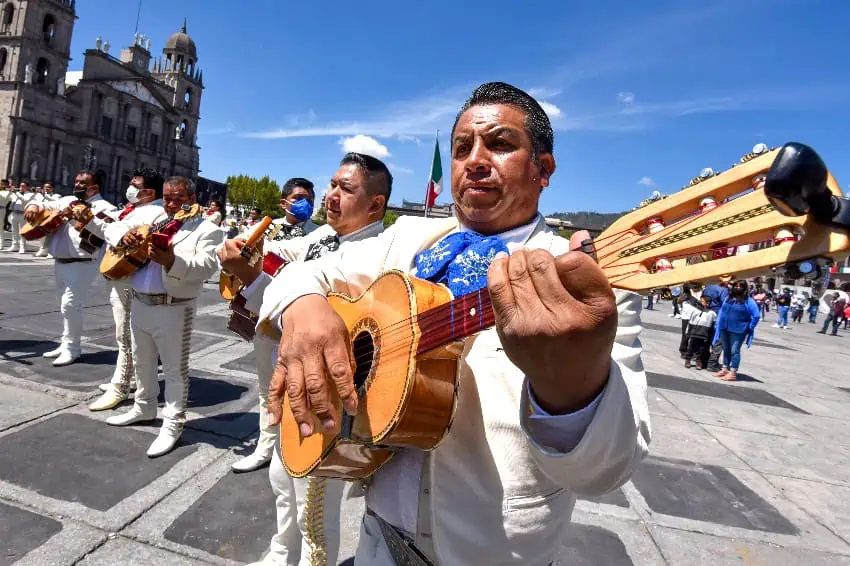
I say this, but people don’t seem to really understand until they’re here. How loud could a residential place be, after all?
Oh, plenty loud. First, there are the approximately seven people per day ringing my doorbell. Then there are people shouting about the things they’re selling as they walk by. Behind my house, we’ve got a guy with one of those super noisy motorcycles, and unruly children who inexplicably don’t start playing outside until approximately 11 p.m. My neighbor across the street has a jam session with his buddies every Friday, too, and there are some neighborhood dogs who get very upset when others pass their houses. And this is a fairly quiet neighborhood, really.
If you need quiet to sleep, bring earplugs and maybe some muffs, too!
Creature comfort availability
One of the things we wanted to do on this last trip was recreate my mom’s famous pot roast. I have a slow cooker…What I don’t have is knowledge of how different cuts of beef are called. We wanted a “chuck roast,” but settled for a hunk of meat that was simply labeled “beef.”
Speaking of my mom, I remember a trip she took to see me back when I lived in Querétaro. We went to Walmart in search of a fan. “I’ll find it,” she said with confidence. “I know Wal-Marts, they’re all laid out the same.” They were not, and she was shocked to find only two to three models of fan available.
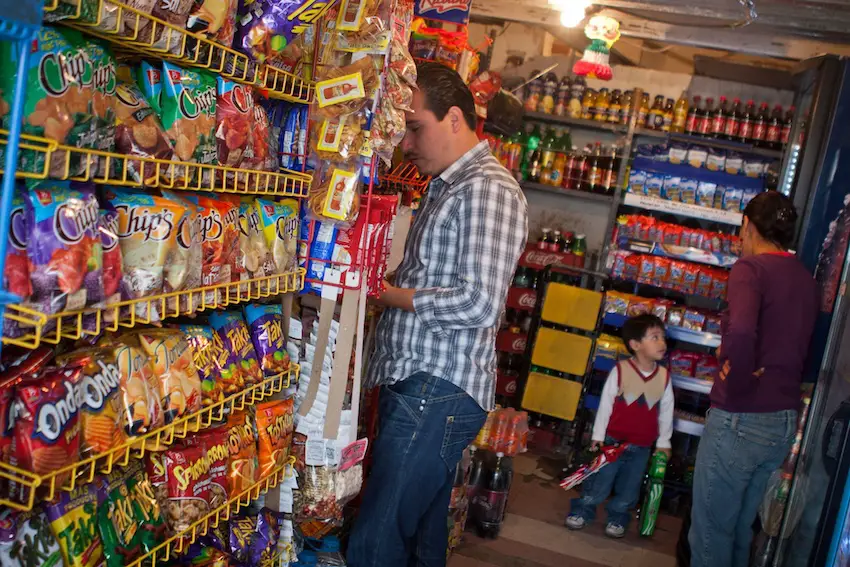
In terms of product selection at places like the grocery store, it’s comparable to the US’s normal selection back in the 1980s. This is fine, as we really don’t need 20 different kinds of Doritos, do we?
You want trash cans? Search hard
This might go under the “sidewalks and street” category, but I think it deserves it own. It’s hard to find a place to freaking throw away your trash when in public, something that annoys me endlessly about my own city. If you don’t want people to litter, make it possible for them to actually throw things away!
Bathrooms are another issue. Perhaps those from large cities have similar experiences, but the fact that bathrooms here are a “business” usually comes as a shock. “Five pesos for 10 squares of toilet paper and powdered soap next to a dirty sink? What can I get for 10?” Thankfully, bathrooms in places like malls and grocery stores are free, at least.
Everything is smaller
Especially for larger guests, fitting in — literally — can sometimes be a challenge. In the US, we’re used to gigantic everything now. Cars (and parking spaces), to go cups, things we don’t think about being big like bathroom stalls (see above). “If you’re really thirsty, you should carry around a big bottle of water,” I say to my guests, knowing the unexpectedly tiny glass of agua fresca they’ll surely get at a restaurant.
For all these reasons, hosting can be pretty involved no matter how unintrusive your guests intent to be. And that’s okay. For those of us who’ve lived here for a while, we know the drill. Clear your calendar and enjoy giving tours not just of places, but of the culture!
Sarah DeVries is a writer and translator based in Xalapa, Veracruz. She can be reached through her website, sarahedevries.substack.com.
Everything you ever needed to know about RVing in Baja California (but were too afraid to ask)

When it comes to RVing in Baja, an adventure enjoyed by thousands annually, Chris and Lindsay Harvey are acknowledged experts. Not only did they, as Chris likes to say, literally write the book on the subject — “RVing and Camping the Baja Peninsula” — they’ve also founded the website RVing Baja. The Harveys also recently took over as operators of Baja Amigos, which, since its founding in 2009 by Dan and Lisa Goy, has been the foremost specialist in small-size RV caravan tours through Baja.
That expertise is on full display speaking with Chris, as he discusses all aspects of RVing in Baja, from boondocking and border crossing tips to preparing your RV to weather the climate and road conditions of a long journey through one of the most ruggedly beautiful places on Earth.
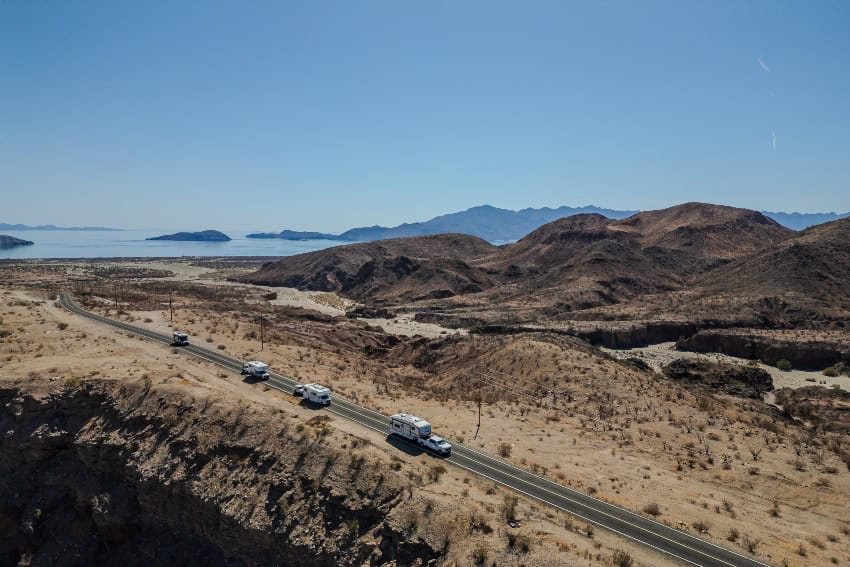
Mexico News Daily: What are the must-know border crossing tips for RVers in Baja?
Chris Harvey: Certain paperwork is required for any RVers crossing into Baja. This includes the Forma Migratoria Múltiple (FMM), Mexican auto insurance and vehicle registration — including towed trailers or vehicles — valid for up to 180 days, which is the maximum length of time travelers are permitted to visit Baja.
To obtain the FMM, travelers must present a passport and pay the fee of approximately US $45. It is the traveler’s responsibility to request the opportunity to pull over at the border to process the FMM. There is a misconception, particularly at busier border crossings, that if the border agent does not tell you to get an FMM, then you do not need one. You absolutely need one. That is, if you plan to spend more than 72 hours beyond the 20-mile free border zone.
Is there anything new in 2025?
Effective in 2025, there are reports of special immigration officers checking tourists for their FMMs. If you travel without an FMM or the mandatory liability insurance on your vehicle, then you are breaking the law. Yes, the consequences can be severe. Also, if traveling with a pet, you must have up-to-date rabies vaccinations good for the duration of your travels, up to 180 days. The CDC now requires an additional fee-free form to be completed upon returning to the U.S.
When you choose to travel with Baja Amigos, we assist in processing all paperwork to ensure that each of our guests is a legal visitor in Mexico, properly insured and comfortable knowing that we are with them as we all cross the border together.
Which attractions in Baja California are best suited for RV travelers?
There are lots of great activities that attract RV travelers to Baja each year, particularly between late fall and early spring. From vineyards and wine tasting in Valle de Guadalupe in Baja California to gray whale watching along the Pacific Coast of Baja California Sur, campers can expect loads of unique experiences.
By far, the biggest attractions in the busy RV season are the whale watching opportunities. Whether gray whale “petting” in the northern part of Baja California Sur or watching humpbacks breach and play in the waters near Cabo San Lucas along the East Cape, whales are a definite theme for attracting campers during the winter months. Additionally, travelers have the unique opportunity to swim with whale sharks in La Paz during this time, adding to the wildlife theme that offers all sorts of attractions during the winter.
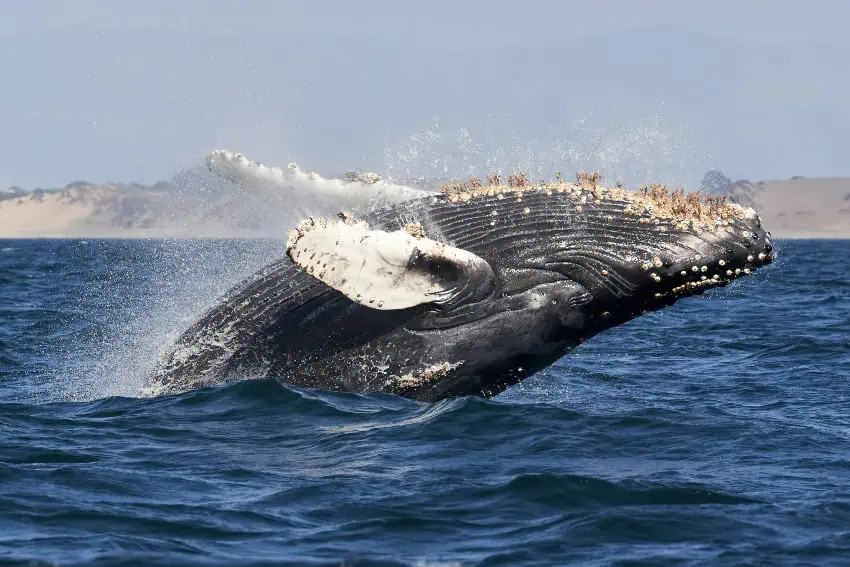
Which places do people most want to visit?
Many campers are generally attracted to warmer weather and water, where they can explore and stay on a variety of beaches on either side of the peninsula. Most prefer the warmer winter waters of the Sea of Cortés [Gulf of California] in places like Bahía de San Luis Gonzaga, Bahía de Los Ángeles, Bahía de Concepción and the beaches that stretch between La Paz and Cabo San Lucas along the East Cape.
Others prefer the Pacific side of the peninsula, which offers surfing, fishing, and whale watching, and great artistic communities such as San Juanico (Scorpion Bay), and Todos Santos and Los Cerritos.
Beachside camping is one of the unique features of Baja, where campers can either camp for free or for a minimal fee and wake up with million-dollar views outside their door. Then there are treasures to be found in the desert, including the otherworldly landscapes of Cataviña and oasis towns such as San Ignacio and Mulegé, each boasting rich history and historical missions. Culturally speaking, Loreto is incredibly popular with campers and is an outdoor enthusiast’s playground. From fishing to water sports in the offshore national park to inland hikes and day trips to explore the San Javier mission and town, Loreto has something for everyone. And the food options in Loreto — incredible!
Which places are not for everyone?
Los Barriles, along the southern end of the peninsula, is also a camper’s haven with a handful of great campgrounds centrally located in a town that is arguably the most popular among expats in the southern state of Baja California Sur. Hyperscenic views on the drive in and around Los Barriles and a very English-friendly community make Los Barriles popular with campers who may want or need a little break from some of the smaller towns and villages that might have lacked the amenities they are used to when traveling in the U.S. and Canada.
We say that people either love or hate towns like Los Barriles and Loreto because they can be much more “comfortable” than other destinations throughout the peninsula. So, depending on whether you are seeking an authentic Mexican experience or want to spend some time where the living is easy, these destinations may be filled with the kind of attractions and relaxation that attract RV campers.
We have designed all of our Baja Amigos caravan itineraries to visit the most popular and must-visit destinations and include or offer optional tours for all of the activities and excursions that attract campers during the winter months. We mix beach camping with formal campgrounds and include highlights such as wine tastings, whale watching and historic town and mission tours in all of our caravans, giving our guests an action-packed overview tour of Baja, leaving them wanting for very little on their Baja-camping bucket list.
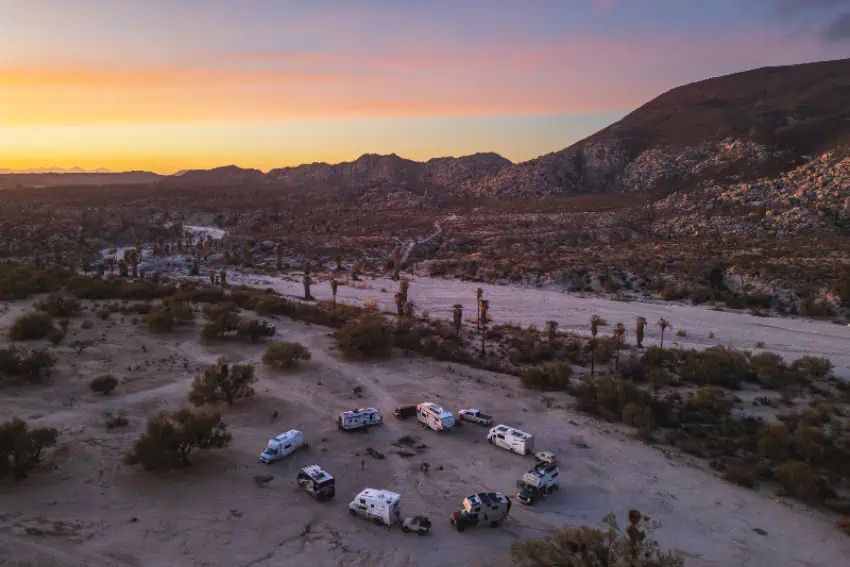
How can someone ensure their RV is prepared for Baja’s terrain and climate?
The peak of RV camping is between November and early April, when the temperatures are typically mild, particularly for those campers traveling from northern U.S. states or Canada. However, during this time, nights and mornings can be cool and in the 50-degree Fahrenheit range in Baja California, while daytime temperatures can be warm (over 80 degrees Fahrenheit) in Baja California Sur.
So campers must be prepared for a range of temperatures when preparing to visit Baja. Between April and October, temperatures are generally considered unbearably hot, so if one plans to RV through Baja during the summer, they would need to account for hot temperatures that are over 100 Fahrenheit in many places. Typically, the summer offers better surfing and fishing. But because the temperatures are so extreme, most RVers will not travel during this time.
In terms of terrain, there is one main highway (Federal Highway 1) that runs nearly 1,000 miles through the length of the peninsula and is the primary backbone of transportation for all vehicles, including semi-trucks. The roads tend to be narrow, often without a shoulder and in various states of repair or disrepair. The highway traverses a variety of desert landscapes with several steep grades, but mostly flat or gently rolling hills. Because Baja is a desert, there are long stretches between towns and villages where cellular service is not to be expected.
What are the best preventative steps before starting out?
Because of the road and terrain conditions, we recommend that every traveler invest heavily in preventative maintenance for their vehicle(s) before they cross into Baja. This is particularly important for many travelers with Mercedes or other custom vehicles that may require special parts or fluids. In this case, we advise carrying spares of vehicle-specific items. Many skilled mechanics in Baja will go out of their way to assist. But if a part is not available, it can be incredibly challenging and inconvenient for travelers to find ways to ship parts to where they are awaiting repair.
We also advise that RVers inspect and replace any tires that are on their last legs and carry at least one full-size spare. Tire-repair shops are numerous along the highways in Baja because tire repairs are such common issues, and tires can typically be patched or installed easily. But when it comes to travel trailer and fifth-wheel trailer tires, bring two spares if possible, as trailer tires are not common along the peninsula.
Our Baja Amigos wagonmasters are all incredibly helpful in assisting our guests who experience issues related to terrain or climate. While we do not mandate mechanical proficiency, they have all traveled extensively throughout the peninsula for years and have loads of resources and contacts to assist when needed. We also travel at safe speeds and in the smallest group sizes of any company operating caravans in Baja, so our guests can feel comfortable knowing that they will receive adequate assistance in the event of traveling incidents.
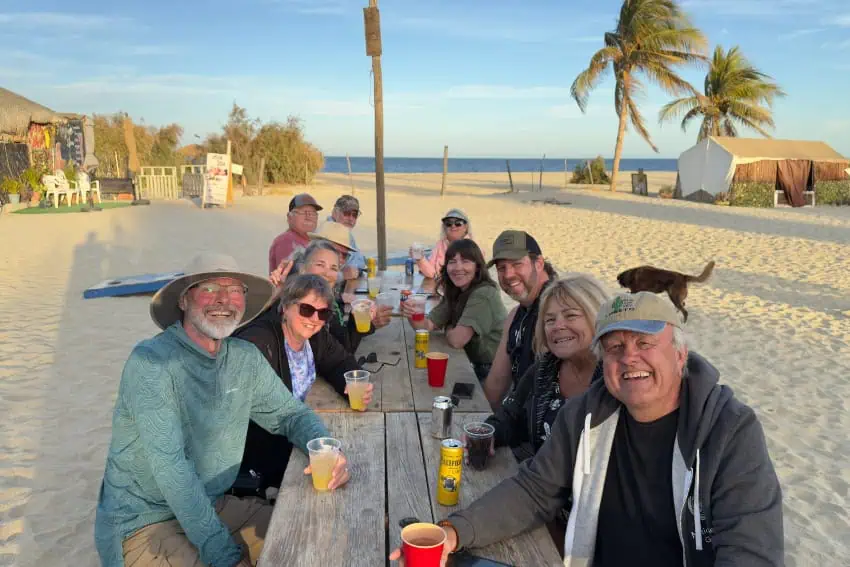
Is traveling alone safer or more enjoyable than with others in Baja?
Although we are in the business of leading small groups of campers through Baja, we are also the first to say that traveling in a caravan is not necessary for either safety or enjoyment. However, there is no doubt that traveling in a group is typically more fun, and there is always safety in numbers.
Baja is generally safe for campers, and the Mexican people are wonderfully hospitable and welcoming. It is always important to recognize and respect local customs and norms and to try to assimilate into Mexican culture while traveling. This not only leads to a more authentic experience but also to a safer one in which locals may make suggestions or offer advice to campers, particularly if there happen to be any local disruptions to the normal way of life.
So it’s safer in groups, but rewarding either way?
In the times when we travel by ourselves, we always make new friends along the way. Doing so opens the door to new experiences and relationships we would not have otherwise. Even though we literally wrote the book for RVing and camping in Baja, there are lots of places to discover outside of those we include in our book and online resources, and traveling alone can lead to all sorts of unique experiences.
However, Baja Amigos is built on the concept of the smallest caravan sizes, and we let all our guests know that regardless of their backgrounds and beliefs, traveling in our caravans will lead them to sharing incredible experiences that will result in new friendships and lifelong memories. As operators of the company and wagonmasters of several tours each season, we find that the joy of traveling with a small group of guests overshadows the “work” that goes into ensuring our guests have a remarkable experience.
This is to say that it is a coin toss whether travelers will enjoy and feel safe traveling alone versus in a group. Typically, we have a handful of couples on our tours where one or the other guest wants to travel independently while the other prefers the safety and expertise of a professionally planned and guided caravan. At the end of these trips, both guests in a party are grateful for choosing the caravan experience and all of the convenience it provides.
What are the benefits of caravan trips with Baja Amigos?
As we are the longest-running and most established caravan company in Baja, we have several key rewards for our guests: a smaller group setting, professionally planned itineraries and guidance and affordability.
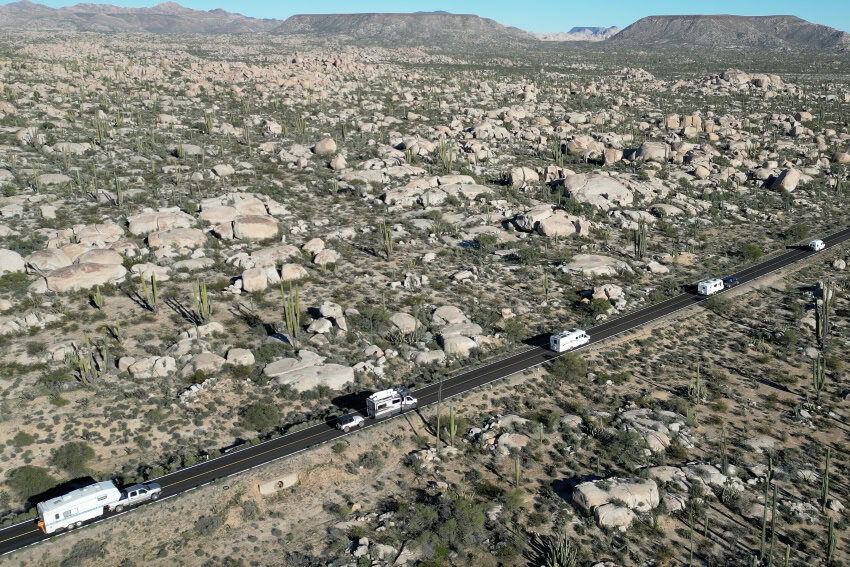
By far, the best thing about joining one of our Baja Amigos caravan tours is the small-group size. That differentiates us from other companies operating in Baja. We have a 15-person maximum, typically in seven RVs, which creates the most intimate experience possible. Guests remain close on the highway during drive days and camp together each night. Our small group size creates a perfect environment for both impromptu and scheduled happy hours and meals together, where strangers become friends and create lifelong memories together.
We also cut [out] months, if not years, of planning logistics and overcoming stressful situations. For instance, dealing with border crossings and driving on challenging roads. Most of our wagonmasters have traveled the peninsula for decades and add their own flair to the tour, where they have relationships, activities or other experiences that go above and beyond guest expectations. We constantly improve the guest experience by amending the itineraries each year based on guest feedback and the changing opportunities in Baja.
We tell our guests to let us do all the planning and worrying so they can make the most of enjoying their Baja camping adventure. And for those guests who make their decisions based just on the bottom-line costs, our caravans have always been and continue to remain the most affordable of any option. We provide an incredible amount of value for our guests, including unique experiences and meals that reflect the cultural and geographic diversity of the peninsula. Through years of leading tours, we’ve found a great balance between including not-to-be-missed activities with the freedom and flexibility for guests to experience more of the kind of things they may enjoy the most.
Of course, we’ve also built in the safety-in-numbers principle, and we only camp in reputable, established campgrounds or campsites where our guests feel secure. We also have great relationships with community members and vendors from years of operating in Baja, where our guests can know that their patronage has a positive impact in supporting great people and communities.
What are the top camping spots with amenities versus rustic sites in Baja?
For RV campers looking for formal campgrounds with amenities comparable to what they may be used to in the U.S. and Canada, regions near the border and a handful of other destinations scattered throughout the peninsula tend to offer the best camping opportunities. Clam Beach Resort near Ensenada and Pete’s Camp in San Felipe are two such options for campers looking for full hookups and the convenience of either camping on the beach or within walking distance to it.
Further south in La Paz, Campestre Maranatha offers arguably the best campground experience in Baja California Sur with level sites, full 50-amp hookup and a refreshing pool. Most other campgrounds in Baja offer a little of what one might expect north of the border, but are much more rustic. Most of the more popular destinations have campgrounds that make visiting convenient and comfortable.
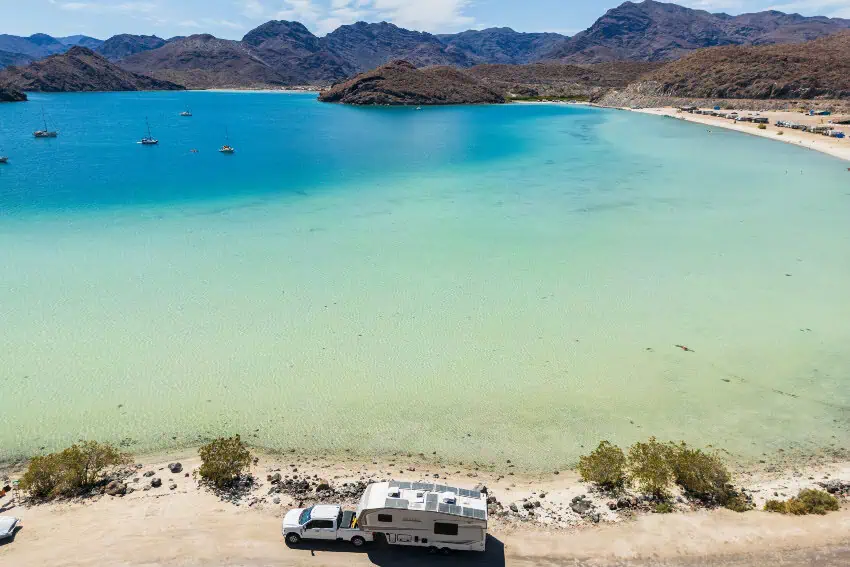
Typical electric hookups at most campgrounds are 15-20 amp, and many campgrounds may offer a primitive dump station, as opposed to full sewer hookups. Some have restaurants, laundry facilities or other extra features onsite. But, due to the landscape, most campgrounds have mostly level sites built in the dirt, as opposed to level concrete pads.
Of course, Baja is known for its primitive desert camping experience, particularly at any number of beaches that line both sides of the peninsula. For those looking to dry camp or boondock their way through a season of camping in Baja, the possibilities are limitless, and typically, one can find a nearby campground that will allow them to empty their tanks and fill up on water.
While 4×4 is a great feature for the most adventurous of campers, many of the most popular rustic beach camping areas are easily accessible with 2WD. Nearly a dozen beaches along the Bahía de Concepción, Playa Rosarito, Bahía de San Luis Gonzaga, Bahía de Los Ángeles, Playa Los Cerritos and Cabo Pulmo are among the most popular beach camping destinations for those willing to trade the convenience of modern hookups for the chance to wake up in a truly beautiful part of the peninsula.
It seems like winter is when most people want to RV through Baja. Is that when you’re planning your next Baja Amigos caravan?
Yes, by far, the best and most popular time for RVers to visit Baja is between November and early April. The late spring through early fall can be unbearably hot. However, for campers escaping the cold northern winters, Baja is a paradise between November and March. This coincides with wildlife migrations such as gray and humpback whales and whale sharks, and makes spending time on the water or camping next to it ideal.
Typically, most campers leave Baja just before the busy Semana Santa, the Holy Week before Easter, as this is a special time of celebration for most Mexican communities.
We offer all our caravans during this peak travel season, with our next Baja Amigos caravan departing the U.S. on November 7 for a 40-day fall adventure. Lindsay and I have been returning to Baja by early November each year since we discovered the beauty of the peninsula in 2019, and this is one of our favorite caravans to lead because we spend a bit more time on a few of our favorite beaches and we beat the rush that tends to fill up the peninsula after the holidays.
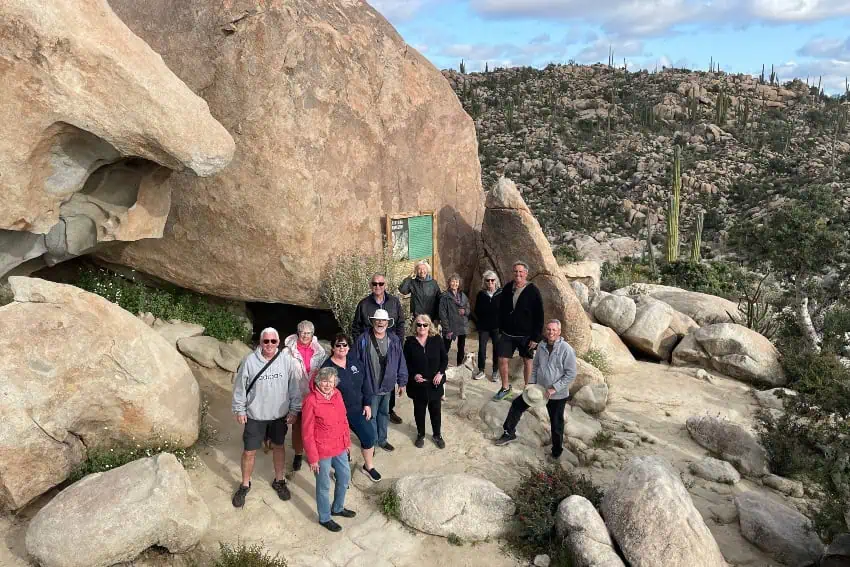
However, we also offer one of our 30-day small-group caravans in both January and March, and we have three February offerings led by our amazing wagonmaster team. We also have a shorter 18-day “beaches-and-whales” themed caravan that Lindsay and I lead at the end of January.
How did you and Lindsay first become interested in RV travel?
Lindsay and I met in Cuba in March 2013 and were married on an island off the coast of Honduras at the end of the year. Travel and adventure have been a part of our marriage from the very beginning. In 2016, we became foster parents for up to eight children at a time, working as house parents for an orphanage in Florida.
With no kids of our own, the time with the children was incredibly fulfilling and allowed us to care for kids who would otherwise not have such a loving home. But we sensed that adventure awaited once our time with the orphanage was over. Sometime in our first year as foster parents, we began studying and planning a way to drive the Pan-American Highway from Alaska to Argentina. We purchased a flatbed F-250 and a slide-in truck camper and began making preparations for the journey.
Two years later, most of the kids in our care were either reunited with their families or adopted, and we made a clean break from the orphanage to pursue our adventure to reach Deadhorse, Alaska, at the top of the world. In July 2018, we pulled into Deadhorse and swam in the Arctic Ocean. Then we turned south on our drive toward Argentina.
As we say, over the next year, everything but the wheels fell off in our plans. We returned to Florida at the end of 2018 to complete some substantial mechanical repairs and regroup before driving west to cross into Baja on our way south. We planned to take the ferry from La Paz to the mainland and continue south into Guatemala and beyond. However, early 2020 had other plans for us — and everyone else — and we realized that crossing international borders was not going to be feasible or advisable with all the uncertainty in the world.
What happened then?
We found ourselves in a holding pattern, taking the fall of 2020 off [from] visiting Baja, but realizing that as long as Mexico remained welcoming to tourism, we could always return to Baja. We spent six more months in our second winter season, further exploring and falling in love with the people, culture, landscapes and wildlife in Baja. At that point, we were hooked and abandoned any thought of the Pan-American Highway as we fell further and further in love with the peninsula.

While drawing a map in the sand for a couple we met on a beach, they suggested that we should write a book or lead others through Baja based on what we knew. It sounded far-fetched at the time. But we did just that, publishing the first edition of our guidebook in 2022. We began our own caravan company shortly thereafter.
As part of our business strategy, we reached out to the existing caravan companies to let them know that we wanted to peacefully coexist in helping first-time travelers explore and enjoy the peninsula. We received curious responses from two companies. The owners of one, Baja Amigos, responded incredibly welcoming, inviting us to not only operate our company side-by-side with theirs but also to teach us the ropes about operating caravans in Baja.
How did you come to operate Baja Amigos?
Our relationship with the owners deepened over the next two years. To the point that it made more sense for us to assume the operations of Baja Amigos rather than to start our own company from scratch. We ended up leading two caravans for them in the spring of 2024, further solidifying our relationship with the owners and realizing that our values were nearly identical: small group sizes, well-rounded and unique experiences that teach respect and support for local Mexican people and communities in which we travel.
It was natural to carry the torch forward for the owners. We share the same vision for helping our guests experience the things that made us so quickly and passionately fall in love with Baja — its people, culture, landscapes and wildlife.
We look forward to continuing to share our passion and experience with our guests as we constantly look to grow and deepen relationships with campground owners, vendors and tour operators in Baja, built on those that the owners of the company have established over the past two decades of traveling independently and as caravan leaders throughout the peninsula.
Chris Sands is the Cabo San Lucas local expert for the USA Today travel website 10 Best, writer of Fodor’s Los Cabos travel guidebook and a contributor to numerous websites and publications, including Tasting Table, Marriott Bonvoy Traveler, Forbes Travel Guide, Porthole Cruise, Cabo Living and Mexico News Daily. His specialty is travel-related content and lifestyle features focused on food, wine and golf.
Sheinbaum addresses Venezuela’s alleged ties to the Sinaloa Cartel: Friday’s mañanera recapped

At her Friday morning press conference, President Claudia Sheinbaum declared that there will be no U.S. military “invasion” of Mexico after news broke that President Donald Trump had “secretly signed a directive to the Pentagon to begin using military force against certain Latin American drug cartels.”
During her final mañanera of the week, Sheinbaum also responded to questions on a range of other topics, including U.S. allegations against the president of Venezuela and the migrant caravan whose members are currently walking through southern Mexico.
Sheinbaum responds to US allegation that Nicolás Maduro has ties to Sinaloa Cartel
A reporter noted that the United States has increased the reward it is offering for “information leading to the arrest and/or conviction” of Venezuelan President Nicolás Maduro.
She also noted that the United States accused Maduro of having ties to the Sinaloa Cartel, which is based in the northern Mexican state of Sinaloa.
In a video message on Thursday, U.S. Attorney General Pam Bondi said that a US $50 million reward — double the previous reward — is now on offer for information leading to the arrest of the Venezuelan president.
“Maduro uses foreign terrorist organizations like TDA [Tren de Aragua], Sinaloa and Cartel of the Suns to bring deadly drugs and violence into our country,” Bondi said.
Today, @TheJusticeDept and @StateDept are announcing a $50 MILLION REWARD for information leading to the arrest of Nicolás Maduro. pic.twitter.com/D8LNqjS9yk
— Attorney General Pamela Bondi (@AGPamBondi) August 7, 2025
She also said that Maduro is “one of the largest narco traffickers in the world and a threat to our national security.”
Sheinbaum said it was the “first time” she had heard of the alleged links between Maduro and the Sinaloa Cartel, which the U.S. designated as a foreign terrorist organization in February.
“On Mexico’s part, there is no investigation that has to do with that,” she said.
“As we always say, if they have some evidence, show it. We do not have any evidence related to that,” Sheinbaum said.
In contrast to the United States, Mexico recognized Maduro’s victory in the 2024 presidential election in Venezuela.
The governments of various countries questioned the legitimacy of the election results.
Government offering ‘different options’ to migrant caravan members
A reporter noted that a migrant caravan departed the southern state of Chiapas this week and that its members intend to remain in Mexico rather than continuing to the northern border with the United States.
The reporter asked the president whether there was “any plan” for the migrants and whether they would receive assistance to regularize their presence in Mexico.
Migrant caravan of 300 departs Tapachula, but not for the US
“We’re working with them on the road and giving them different options, from repatriation to their country to the possibility of having employment in our country,” Sheinbaum said.
She said that officials from the Interior Ministry and the National Immigration Institute were “working” with members of the caravan, who set out on foot from the city of Tapachula on Wednesday.
The migrants — who are aiming to reach Mexico City — are reportedly from a range of countries including Cuba, Haiti and Venezuela.
They remained walking northward in Chiapas as of Friday.
Sheinbaum presents song dedicated to immigrants in the US
After Culture Minister Claudia Curiel de Icaza spoke about the México Canta music competition, which is now approaching its semi-final stage, Sheinbaum presented a new song by the Texas-based band Intocable, which plays regional Mexican music and will perform at the grand final of the México Canta contest.
“Yesterday, the group Intocable came [to the National Palace], Ricky and René, to tell me that they were joining the [México Canta] initiative … and they showed me an unreleased song,” the president said.
“And I said to them: Why don’t you let me present it at la mañanera? And they said yes. … It’s dedicated to our migrant brothers and sisters who suddenly find themselves in a difficult situation, and the song talks about how to come together, how to feel part of our country and part of a collective that loves them,” Sheinbaum said.
“Here’s Intocable.”
Durante la conferencia matutina, la Presidenta Claudia Sheinbaum, presentó la más reciente canción de Intocable, la cual está dedicada a la comunidad migrante, además de recordar que la agrupación musical está sumada a la iniciativa México Cantahttps://t.co/4bukeWtQt8 pic.twitter.com/TLqILcjvuK
— La Razón de México (@LaRazon_mx) August 8, 2025
By Mexico News Daily chief staff writer Peter Davies (peter.davies@mexiconewsdaily.com)
Suspect arrested in Monday killing of Reynosa prosecutor
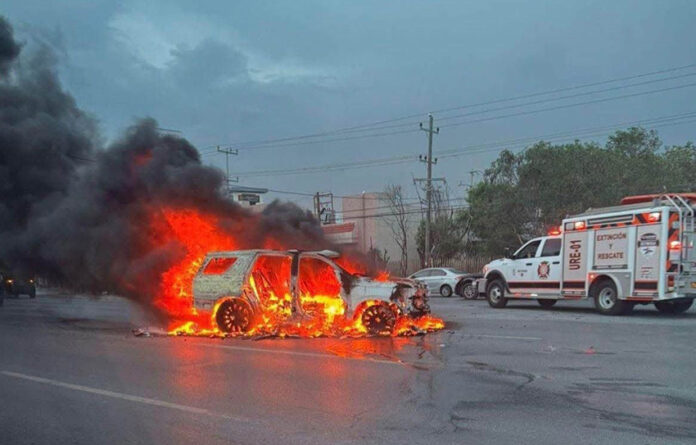
A man suspected of involvement in Monday’s killing of a Tamaulipas prosecutor was arrested on Friday, the Federal Attorney General’s Office (FGR) announced.
Federal agents and military forces arrested Jaret Roberto “H” at a rehabilitation center in Reynosa, Tamaulipas, the border city where the murder took place. Authorities also seized two long guns, ammunition and drugs, the FGR said in a press release.
Jaret Roberto “H” is suspected of participating in the assassination of Ernesto Cuitláhuac Vázquez Reyna, the Tamaulipas state delegate of the FGR.
“Information found on his cellphone established without a doubt his direct participation in the homicide … as a member of ‘Los Metros,’ a faction of the ‘Gulf Cartel,’ one of the main groups responsible for fuel trafficking in that region,” the FGR said.
In a dramatic attack, the assailants threw a grenade at Vázquez’s black Cadillac SUV as he drove down Reynosa’s Miguel Hidalgo Boulevard. Vázquez was then dragged out of the burning vehicle and shot.
The FGR later tracked a vehicle involved in the attack, allowing them to identify and locate the suspect, Jaret Roberto “H” — who incidentally was the target of a pre-existing arrest warrant.
The investigation into the attack continues as authorities search for other suspects involved in Monday’s attack, the FGR said.
Mexico News Daily
In Ivo’s wake, intense heat and stormy conditions continue to affect northwest Mexico

Prompted by adverse climatic conditions across several regions of the nation, Mexico’s National Meteorological Service (SMN) has issued warnings of a range of weather-related threats from life-threatening surf, high winds and monsoon-related intense rainfall to a scorching heat wave that’s sent temperatures well above 40 degrees C (100 degrees F).
In the Pacific Ocean, Tropical Storm Ivo continued to generate surf swells affecting Mexico’s southwestern coast on Friday and the storm’s maximum sustained winds of 96 km/h (60 mph) began to reach the southern Baja California Peninsula.
#AvisoMeteorológico.#Ivo mantendrá #Lluvias fuertes en el sur de #BajaCaliforniaSur mientras se aleja gradualmente de las costas de #México.
Más información enhttps://t.co/fqyGbgRy5P pic.twitter.com/IiEzbftMdt
— CONAGUA Clima (@conagua_clima) August 8, 2025
The U.S. National Hurricane Center (NHC) also issued an advisory on Friday, warning that the swells were causing dangerous surf and rip-current conditions. Separately, the SMN warned that Baja California Sur could see surf swells up to 4 meters (13 feet) high, while Oaxaca and Chiapas could expect swells of up to 3 meters (10 feet).
The SMN also warned coastal residents of the states of Jalisco, Nayarit, Colima and Baja California Sur of heavy rains and high winds. The SMN said Jalisco could see upwards of 75 mm (3 inches) of rain on Friday and urged residents in affected areas to pay heed to advisories issued by local civil protection services.
At the same time, a heat wave was scorching northwestern Mexico. Mexicali, the capital of Baja California, set a new record high temperature on Thursday, when the mercury topped out at a potentially lethal 52.7 degrees C (127 degrees F).
State and local authorities in the region have implemented measures to mitigate the heat, setting up hydration stations and air-conditioned shelters.
A report on this year’s heat waves issued on Aug. 1 by Mexico’s General Directorate of Epidemiology said extreme temperatures were to blame for 49 deaths through the end of July, including three in Baja California and 14 in neighboring Sonora.
A third meteorological phenomenon, the Mexican monsoon, was causing atmospheric instability and generating intense rains in the northern states of Durango and Sinaloa.
The Mexican monsoon is a seasonal weather pattern featuring a shift in wind and precipitation patterns characterized by warm, moist air moving inland from the Atlantic and Pacific oceans. The monsoon converges in northwestern Mexico, bringing significant rainfall.
The SMN said the monsoon could dump up to 75 mm (3 inches) of rain in Durango and Sinaloa, while Jalisco is expected to see considerable precipitation. Electrical storms and hail were also in the forecast.
With reports from La Voz de la Frontera, Informador and Debate
CDMX moves 3 cannabis tolerance zones, but some neighbors still aren’t happy
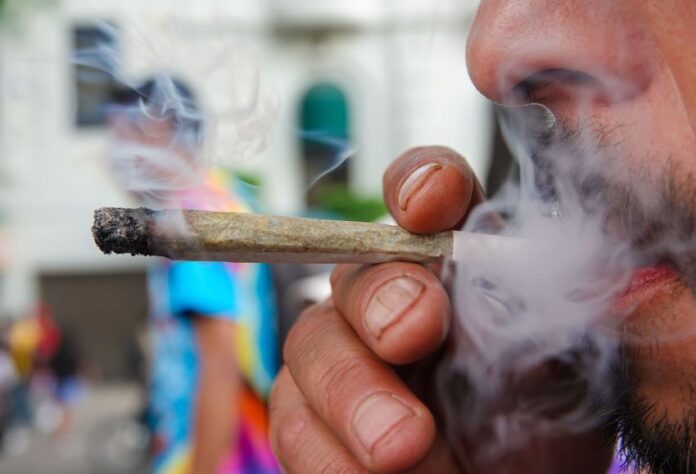
Three major cannabis consumption areas in central Mexico City plazas were relocated this week to new government-designated “420 zones,” igniting a fresh wave of debate, protests and finger-pointing as the capital moves to ready its streets for the 2026 FIFA men’s World Cup.
The uprootings, undertaken on direct order from Mayor Clara Brugada, came three years after pro-cannabis activists “liberated” seven marijuana smoking zones in Mexico City.
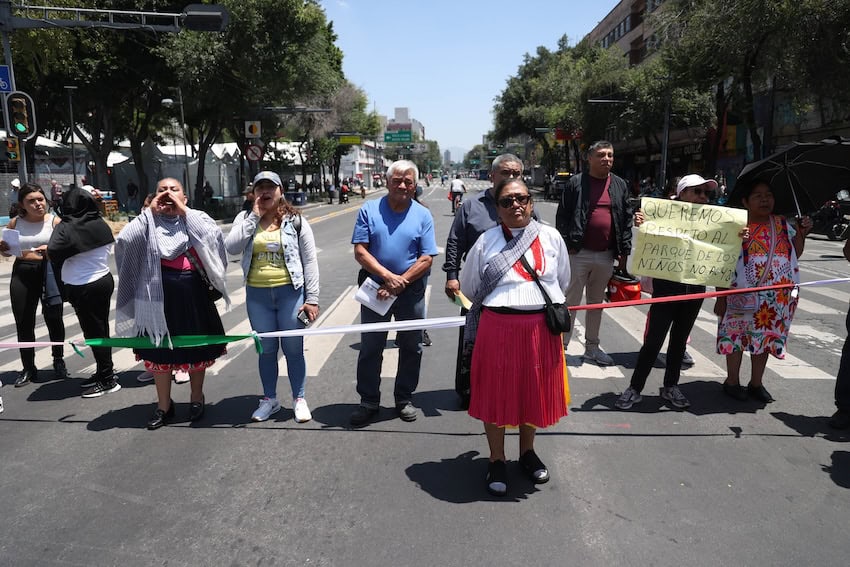
Mexico City authorities — citing complaints about crime, on-site marijuana sales and violence — cleared out consumption camps from Plaza de la Información outside the busy Hidalgo Metro station, the Estela de Luz monument at the entrance to Chapultepec Park, and outside of the Museum of Memory and Tolerance in the city center.
In their place, officials created three state-sanctioned “420 zones” for usage: Plaza de la Concepción in the Historic Center, the Simón Bolívar Monument on Paseo de la Reforma in the Guerrero neighborhood, and the José Saramago Reading Plaza adjacent to Chapultepec Park.
Although the legality of cannabis and consumption in Mexico remains shrouded in uncertainty, each new tolerance space comes with firm rules:
- Cannabis can be consumed only between 8 a.m. and 8 p.m.
- Only the legal amount established for personal consumption is permitted.
- Users are limited to 40 minutes per visit.
- Consumption of alcohol or other substances is not permitted.
- The buying and selling of cannabis is not permitted.
- Taking photographs or recording video is prohibited within the perimeter.
- Violence and harassment will not be tolerated.
- Government staff and police will monitor each site throughout the day to keep order and enforce regulations.
Authorities said the new locations were selected in consultation with advocacy groups like Comuna 420 and Siembra Cultura, and were intended to keep consumption away from high-traffic spots and residential neighborhoods.
But tension simmered as soon as the plan rolled out.
“We don’t want to negotiate; we want them to be relocated,” said Óscar Ruiz, a neighborhood manager in Guerrero, who is spearheading a petition for complete removal of the Simón Bolívar zone.
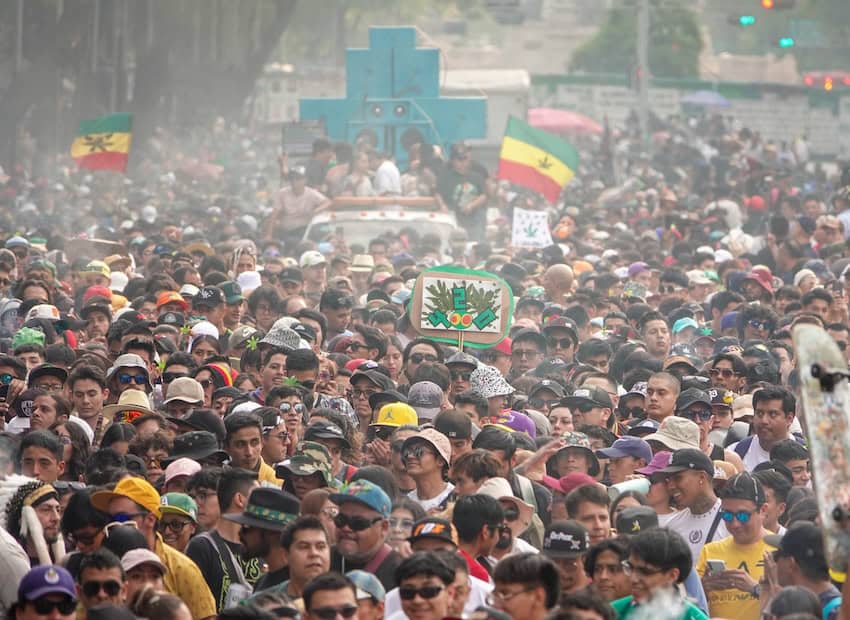
Some parents said they worry about children being exposed to drug use, especially near schools and public buildings.
“Seeing them here, [children] will think it’s OK to be lazy, doing nothing all day,” said a 45-year-old mother of two who gave her name only as Vianey.
“It’s a mockery that they’re in front of the Attorney General’s Office,” she added, referring to the smoking zone at the Simón Bolívar monument.
“You can’t even walk around in peace anymore,” said María Elena García, who lives near the new Plaza de la Concepción smoking area. “The smell is unbearable, there are people selling stolen goods and even fighting among themselves. This is no longer a safe place.”
Activists, however, defend the new zones as an overdue step toward destigmatizing cannabis use.
“We have to get rid of the label that all marijuana users are criminals,” said “Popeye,” a Comuna 420 organizer at the Simón Bolívar site.
Zona de tolerancia cannabica. Sancionado por el @GobCDMX. Con esto la ciudad da un paso adelante en política de drogas. Falta mucho, claro. Pero esto es un avance, cómo no. #cannabis #THC #Políticadedrogas #ReduccióndeDaños pic.twitter.com/b5VUjO5CTs
— Rubén Diazconti (@RubenDiazconti) August 4, 2025
He said the new roundabout was picked to keep smoke and crowds away from main thoroughfares and homes.
At Plaza de la Concepción, Diana, a member of the Daughters of Cannabis collective, said activists have faced open hostility, including threats from residents.
“They thought it was going to be a permanent smoke-out,” Diana said. “They also didn’t know government personnel would be there. What people believe about us is just a stigma.”
While the city is promoting the zones as a solution, some activists view the move as image-polishing for next summer’s World Cup, which will be co-hosted by the United States, Mexico and Canada.
“It’s extremely discriminatory that instead of legislating and changing the laws for marijuana users, they prefer to move us or hide us,” Diana said, calling the relocation “an attempt to whitewash the city.”
Mexico’s Supreme Court ruled prohibition of recreational cannabis unconstitutional in 2021, yet a full regulatory framework has yet to be implemented.
For now, the new city-run 420 zones (named for a common slang term of cannabis users) operate as a live experiment, monitored by police and watched closely by neighbors.
Officials said the new rules and strict oversight may be updated in coming weeks as the city evaluates the program.
With reports from El Universal and El País
Central bank slows rate cuts, but still brings interest rate to a 3-year low
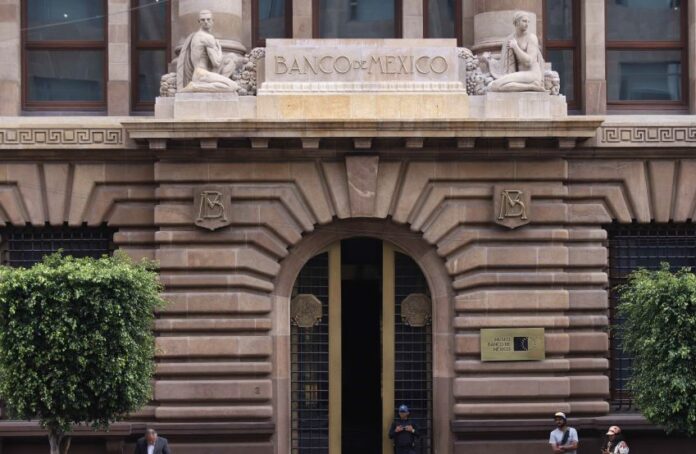
Mexico’s central bank slowed its pace of monetary easing Thursday, cutting its benchmark interest rate by 25 basis points after four straight 50-basis-point cuts this year.
Still, the 4-1 vote lowered the rate to a three-year low of 7.75%.
The decision to cut the rate by only 25 basis points was largely expected after the five-member governing board indicated that smaller reductions were likely.
Deputy Governor Jonathan Heath was the lone dissenter, voting to hold the interest rate at 8%, the second consecutive meeting in which he has voiced a preference for more caution.
The four straight 50-basis-point cuts that the central bank (Bank of Mexico or Banxico) had approved before Thursday’s meeting came after the overnight interbank interest rate sat at 10% before the bank’s February meeting.
News agency Reuters pointed out that Banxico is battling the twin challenges of lowering inflation while stimulating the economy. This represents a difficult balancing act as “weak economic growth and uncertainty tied to trade tensions and geopolitical developments” offset recent positive inflation news.
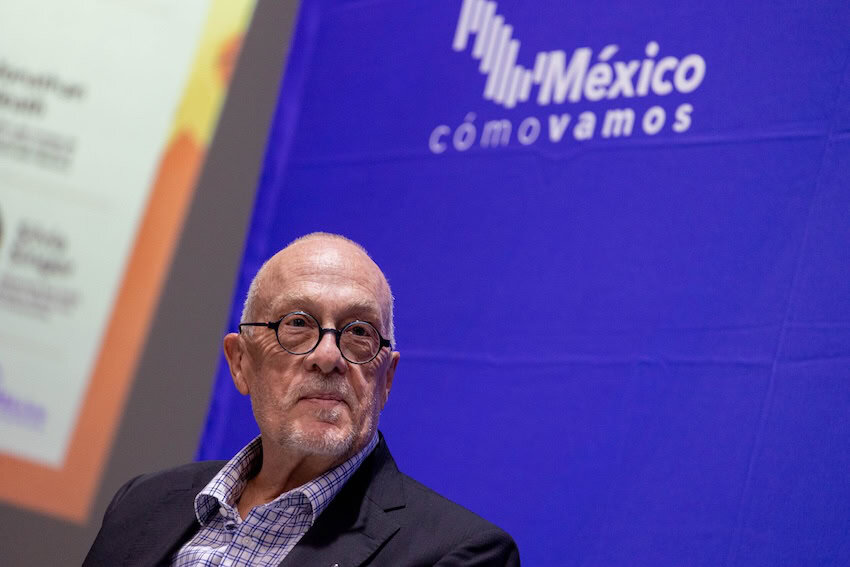
Official data released before the bank’s meeting showed inflation had slowed in July to 3.51%, its lowest level in nearly five years, as shrinking produce and energy prices offset acceleration in consumer goods prices.
In arguing to hold the interest rate at 8% last month, Heath had called for prudence, arguing that it was “unrealistic to expect inflation to fall on its own just because of stagnant economic forecasts.”
Mexico’s economy grew by 0.7% in the recently completed second quarter, following an anemic 0.1% mark in the first quarter. A Banxico poll indicates that analysts forecast growth of just 0.3% by year’s end.
Banxico’s post-meeting statement said the decision “took into account the behavior of the exchange rate, the weakness of economic activity, and the possible impact of changes in trade policies worldwide.”
In a research paper, BBVA banking group said the statement’s forward guidance “retained the strategic ambiguity introduced in June, reinforcing a data-dependent approach, with no explicit preference for the next move.”
While Thursday’s Banxico statement did suggest the board would consider rate changes going forward, it withheld specific language regarding future cuts that had been included in previous announcements.
BBVA said the absence of new language in Banxico’s statement suggests the Board of Governors will be cautious going forward, but that they “remain open to continuing the easing cycle, albeit at the current more gradual pace of 25 basis points.”
Inflation data will also influence future decisions. Although Thursday’s inflation news was positive, the outlook was mostly unchanged since core inflation remained high at 4.23%.
Banxico did adjust its forecast for headline (total) inflation in the third quarter, lowering it to 3.8% from 4.1%. However, the bank raised its forecast for Q3 core inflation (which excludes energy and food) from 3.8% to 4.1%.
Banxico’s next Board of Governors meeting is scheduled for Sept. 25.
With reports from Reuters, El Economista and El Financiero
‘There won’t be an invasion’: Sheinbaum de-escalates after Trump orders US military to target cartels
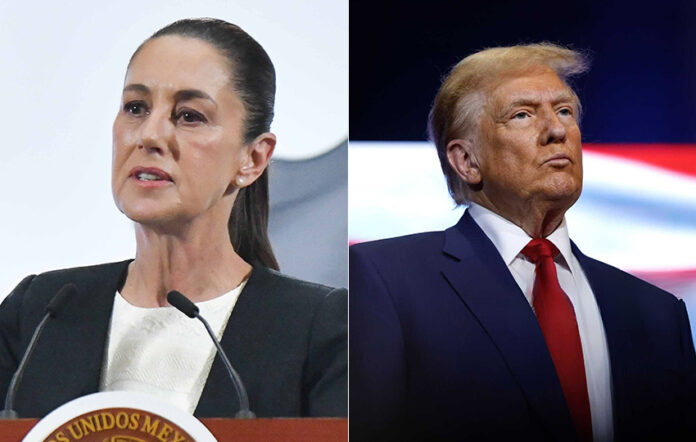
President Claudia Sheinbaum on Friday told reporters that an executive order signed by U.S. President Donald Trump directing the Pentagon to target foreign drug cartels does not pose a risk of invasion to Mexico.
Citing anonymous sources, a New York Times report published on Friday said that Trump has “secretly signed a directive to the Pentagon to begin using military force against certain Latin American drug cartels that his administration has deemed terrorist organizations.”
During her daily press conference, Sheinbaum said the directive does not imply that the U.S. military will cross the border into Mexico. She also told reporters that her administration had been advised of the details of the executive order.
“We were informed that this executive order was coming and that it had nothing to do with the participation of any military personnel or any institution in our territory,” she said, adding that the directive referred exclusively to actions within U.S. territory.
When asked about the Times’ reporting that the directive authorized military use abroad, on land and sea, Sheinbaum dismissed that claim, too.
“No,” she said, “absolutely not. The United States is not going to send its military into Mexico. We cooperate, we collaborate, but there will be no invasion. That’s ruled out … because, in addition to what we’ve stated in all our conversations, it’s not allowed, nor is it part of any agreement.
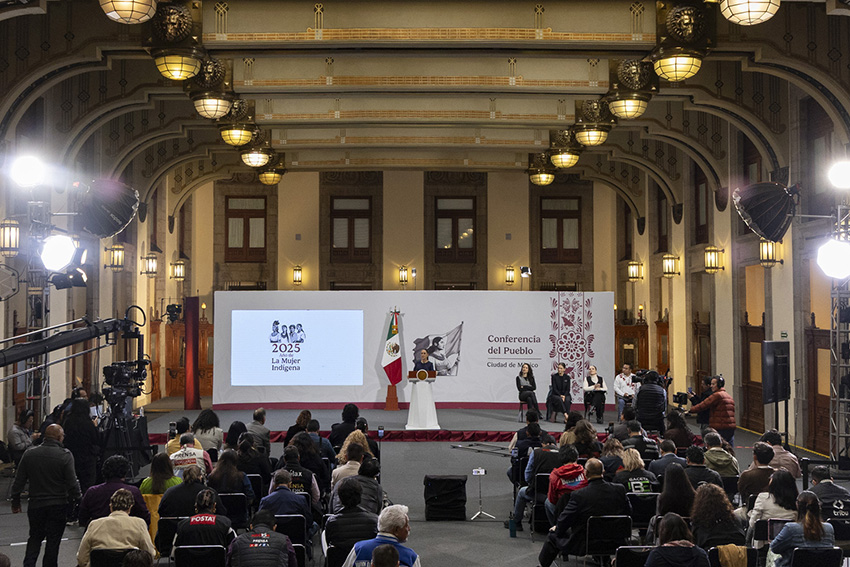
“Each time they’ve raised the issue, we’ve said no. We can collaborate in other ways, but if [entry of the U.S. military is the suggestion], then no.”
When pressed to explain if the reporting was inaccurate, Sheinbaum demurred, suggesting she had not seen the directive.
“Well, we’ll have to see how the executive order is [written],” she said, “but there’s no risk that they’ll invade our territory.”
The Times reported the U.S. Defense Department declined to comment on the directive. When AFP contacted the Pentagon with regard to the executive order, its questions were referred to the White House.
Still, the Times said Trump’s directive provides an official basis for U.S. military operations at sea or on foreign soil against the cartels.
Mexican cartels in the crosshairs
In February, the Trump administration designated six Mexican drug trafficking groups as terrorist organizations. When the U.S. government announced this classification, Sheinbaum warned that her administration would never tolerate a U.S. invasion.
In a Thursday television interview, U.S. Secretary of State Marco Rubio said the U.S. government could use the designations to “target” cartels, without further specifying what range of actions could be used to do so.
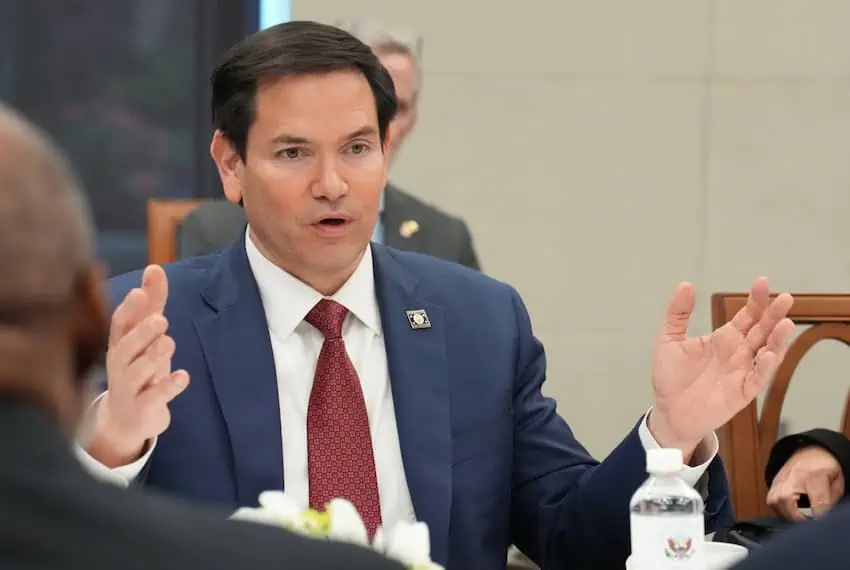
“It allows us to now target what they’re operating and to use other elements of American power, intelligence agencies, the Department of Defense … to target these groups if we have an opportunity to do it,” Rubio said. “We have to start treating them as armed terrorist organizations, not simply drug dealing organizations.”
The Trump administration has already deployed thousands of active-duty combat troops to the U.S. border with Mexico in order to staunch the northward flow of drugs, particularly fentanyl, as well as limit the flow of immigrants.
The U.S. also has sent two warships to patrol the coasts of Mexico — one in the Pacific Ocean, the other in the Gulf of Mexico — a use of naval force without precedent in U.S. border security operations.
The U.S. has also been using drones and spy planes to surveil Mexican drug cartels, an action that Sheinbaum said was “part of a coordinated operation between the U.S. and Mexican governments.”
At the same time, the news agency Reuters reported on Friday that the U.S. Federal Bureau of Investigation (FBI) is looking to add drug cartel suspects to its terror watch list.
In an exclusive report filed after reviewing law enforcement documents, Reuters reported that the FBI has asked local police to submit the names of people they believe are linked to the eight criminal groups designated as terrorist organizations in February. It also asked for information about family members and associates of the groups’ members.
These names would be added to the U.S. government’s terrorist watch list which contained roughly 1.1 million names as of a year ago.
Civil rights groups have complained that designating suspected cartel and gang members, as well as their relatives, as terrorists will drastically expand the number of people on the watch list, which can subject people to surveillance on airplanes, travel restrictions and secondary screenings at airports and other ports of entry into the United States.
With reports from The New York Times, El Universal, Reforma, Reuters and CBS News
Aenikkaeng: The forgotten story of Mexico’s Korean migrants

These days, there’s a global obsession with all things Korean, from K-pop and K-dramas to skincare routines and sizzling Korean BBQ. In the Mexico City neighborhood where I live — technically Roma Norte, but close to Zona Rosa’s Little Seoul — Korean restaurants have multiplied in the 18 months since I’ve lived here, to my great delight, I might add.
But did you know that Mexico has had a Korean diaspora since the early 1900s? It was 120 years ago this year that the first wave of Koreans set foot on Mexican soil. In this piece, we’ll explore the fascinating and tragic story of that migration and what followed.

A forgotten migration story
In 1904, global power struggles and economic demands set the stage for an unlikely migration. Korea was increasingly under Japan’s control, though official annexation wouldn’t come until a few years later. Meanwhile, Mexico was in the last years of the President Porfirio Díaz dictatorship, and the Yucatán Peninsula faced a labor shortage as global demand surged for henequén, an agave plant used to make rope and twine.
To meet that demand, a Japanese firm partnered with a British labor recruiter to bring Korean workers to Mexico under misleading terms. Newspaper ads in Korea described Yucatán as a land of opportunity. They promised free transport to Mexico, housing, access to land, education for children, healthcare and a guaranteed return home.
The reality, however, would turn out to be grim.
At the time, Korean emigration outside Asia had only just begun. In 1902, laborers were first sent to work on sugar plantations in Hawaii. But by 1905, Japan began limiting Korean migration to the U.S., worried it threatened Japanese laborers and would increase anti-Japanese sentiment in places like California.
As a result, Mexico — with no prior diplomatic ties to Korea and no existing Korean population — became the next destination for migrant labor. This was driven more by Japan’s imperial interests than by any bilateral agreement.
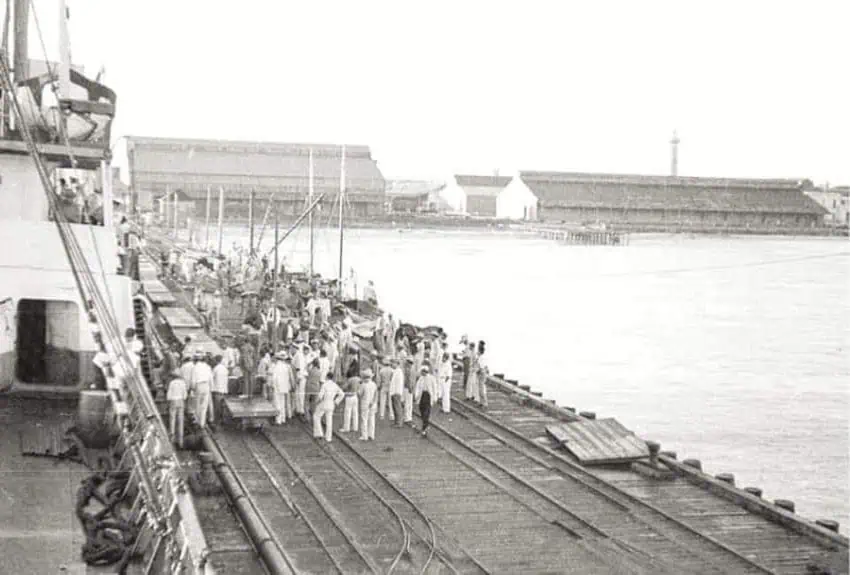
From hope to hard labor
On May 4, 1905, over 1,000 Koreans disembarked at the port of Salina Cruz, Oaxaca, after a long trans-Pacific voyage aboard the SS Ilford. They had left an impoverished and unstable Korea for a better life in Mexico. Instead, they were sold as indentured laborers to henequén plantation owners in Yucatán.
They were quickly absorbed into Mexico’s deeply exploitative hacienda system. What had been promised as a five‑year contract with fair conditions — almost a dream opportunity for the time — turned into a grueling and punishing reality. Laborers worked long hours in extreme conditions harvesting henequén — referred to as “green gold” — without any of the promised benefits.
Many Korean workers were scattered across vast plantations with no access to Korean-language schools, churches or community networks. Isolated from one another and cut off from their culture, they found themselves working side by side with Indigenous Maya laborers, who were also subjected to the same brutal labor conditions.
Over time, the Korean men began to adopt elements of Maya life. Some learned Mayan before Spanish and formed deep bonds with the local communities. Intermarriage between Koreans and Maya became common. As families formed, a unique cultural fusion emerged. The descendants of these unions grew up immersed in Maya traditions, Catholic festivals and local customs while the Korean language and identity slowly faded.
By the time their contracts ended in 1910, Korea had been formally annexed by Japan, and the Mexican Revolution was erupting. There was no home to return to, and few viable alternatives. Many stayed in Yucatán; others left to find work elsewhere in Mexico or in Cuba.
Aenikkaeng: Reclaiming a buried identity
Descendants of those original migrants eventually came to call themselves Aenikkaeng, a term derived from the Korean pronunciation of “henequén.” It’s a word that captures both the hardship and the legacy of their ancestors’ experience.
For decades, this history remained buried. It wasn’t until the 1970s that South Korean researchers, diplomats and journalists began visiting Yucatán to trace the descendants of the SS Ilford’s 1905 passengers. Their efforts aligned with South Korea’s broader push to strengthen ties with Latin America, and the rediscovery of the Aenikkaeng story took on historical and diplomatic importance.

In 2005, the centennial of Korean immigration to Mexico was commemorated in Mérida with a monument inscribed with the names of the original 1905 laborers. Two years later, the Museum of Korean Immigration to Yucatán (MCICY) opened with support from both the Mexican and South Korean governments.
Yet, for many descendants, cultural identity remained complicated. Those interviewed during centennial celebrations often described feeling Korean in name only. Their lives were shaped by the land they grew up in — by Maya roots, Mexican traditions and generations of adaptation.
A cultural revival
In recent years, there have been growing efforts to reconnect with that lost heritage. Local organizations like the Asociación Coreano-Mexicana have launched language courses, genealogy projects and heritage trips to South Korea. Some younger Aenikkaeng descendants have traveled to Seoul or Incheon, seeking work there or trying to understand the culture their ancestors left behind.
In 2017, Korean-Argentine photographer Michael Vince Kim released a striking photo series documenting Aenikkaeng descendants in Yucatán and Cuba. His portraits offered an intimate glimpse into a little-known community, honoring the memory of those early migrants and the quiet endurance of their families. The series, like the people it portrayed, is both powerful and understated — a visual tribute to a legacy long overlooked.
The story of Koreans in Mexico is still missing from most textbooks and public discourse. While the experiences of other Asian migrant communities have been recognized, the Korean story remains largely absent from Mexico’s national narrative. For the Aenikkaeng, recognition is long overdue — but it’s slowly beginning to arrive.
Koreans in Mexico today
Approximately 13,000 ethnic Koreans now live in Mexico, with the largest communities in Mexico City, Guadalajara and Monterrey. In Mexico City, the area informally known as Little Seoul thrives with Korean restaurants, grocery stores and businesses, a vibrant counterpoint to the first wave of laborers who arrived in 1905 and the product of a newer migration surge tied to South Korean corporate expansion in the 1990s. Mexico City has become a hub of Korean restaurants, grocery stores and businesses, reflecting a very different kind of Korean migration.
I live just a few blocks from there, and it’s one of my favorite things about the neighborhood. After spending time in South Korea, there’s something comforting about being able to pick up gochujang nearby or sit down for a good bowl of kimchi jjigae. It’s a reminder of a place and time that still feels close — just in a different context.
Rocio is a Mexican-American writer based in Mexico City. She was born and raised in a small village in Durango and moved to Chicago at age 12, a bicultural experience that shapes her lens on life in Mexico. She’s the founder of CDMX IYKYK, a newsletter for expats, digital nomads, and the Mexican diaspora, and Life of Leisure, a women’s wellness and spiritual community.
